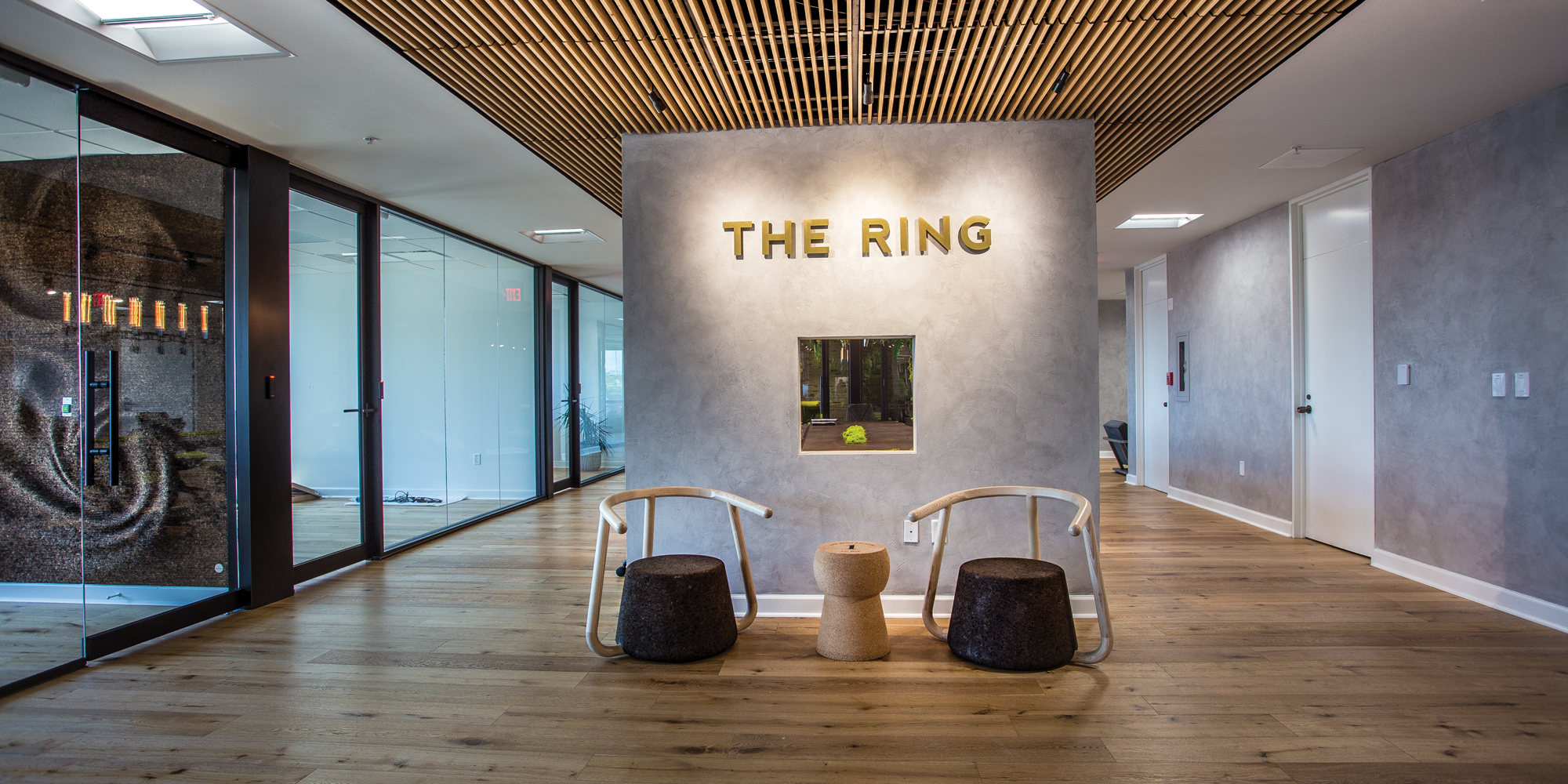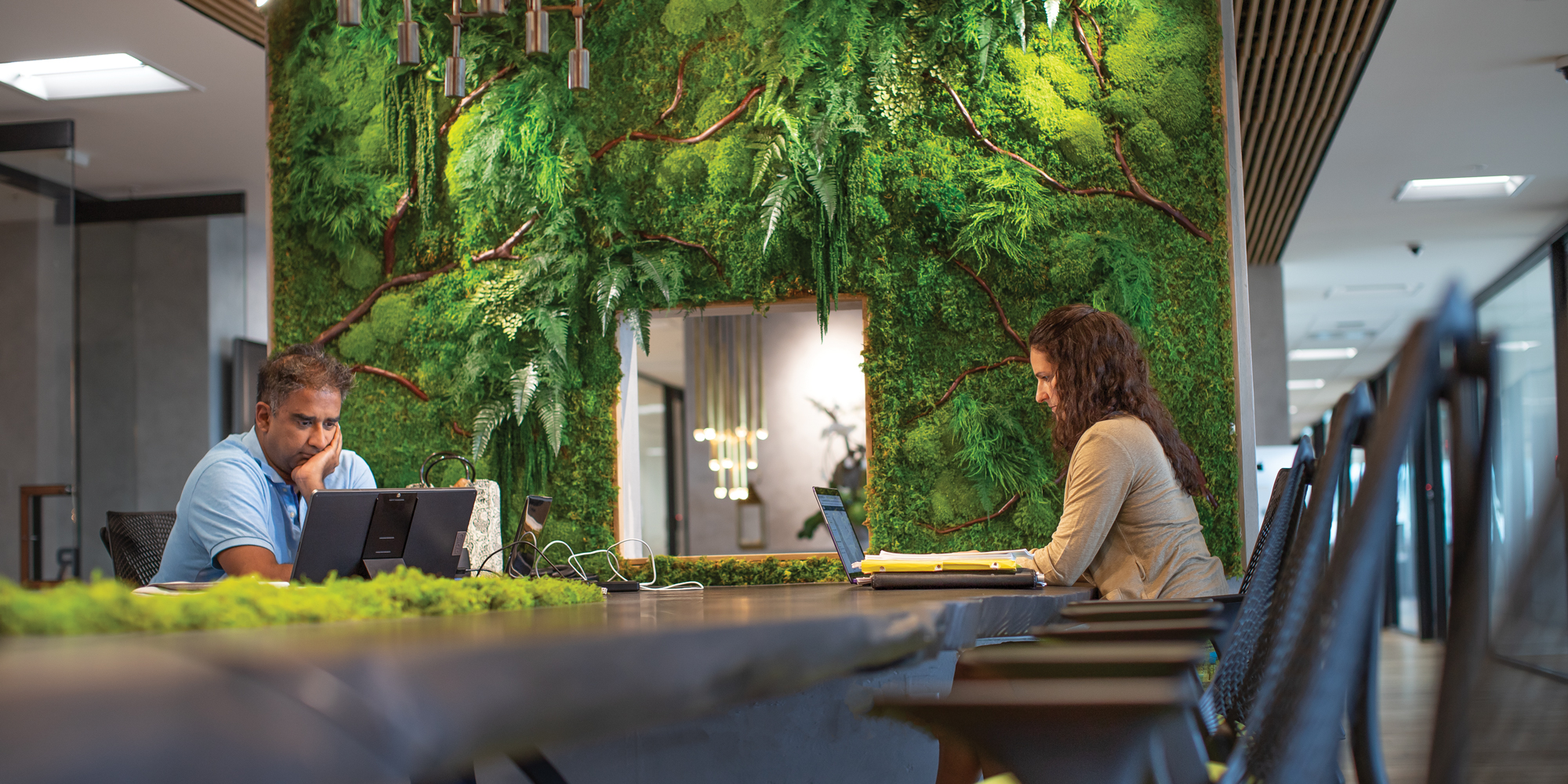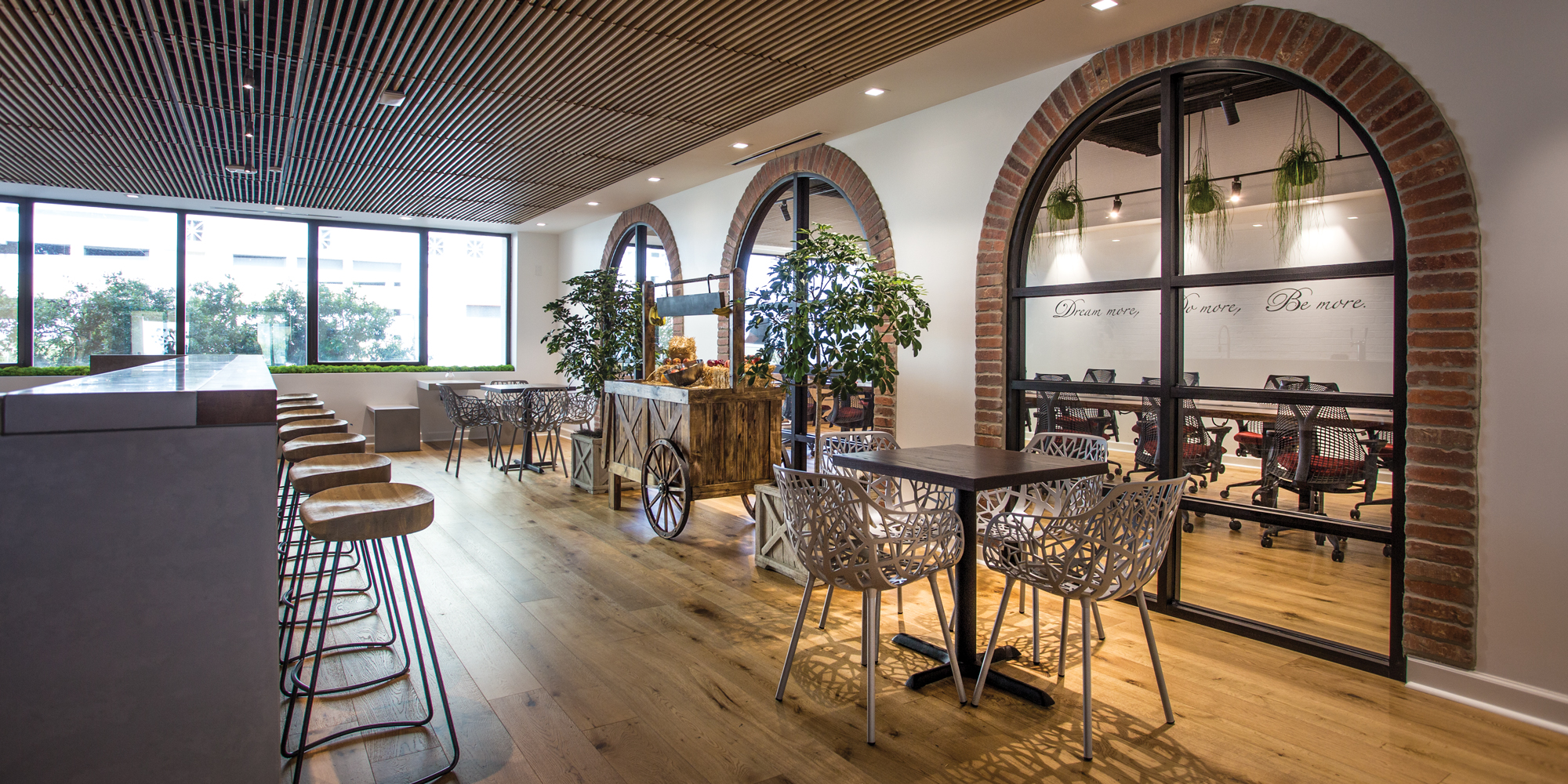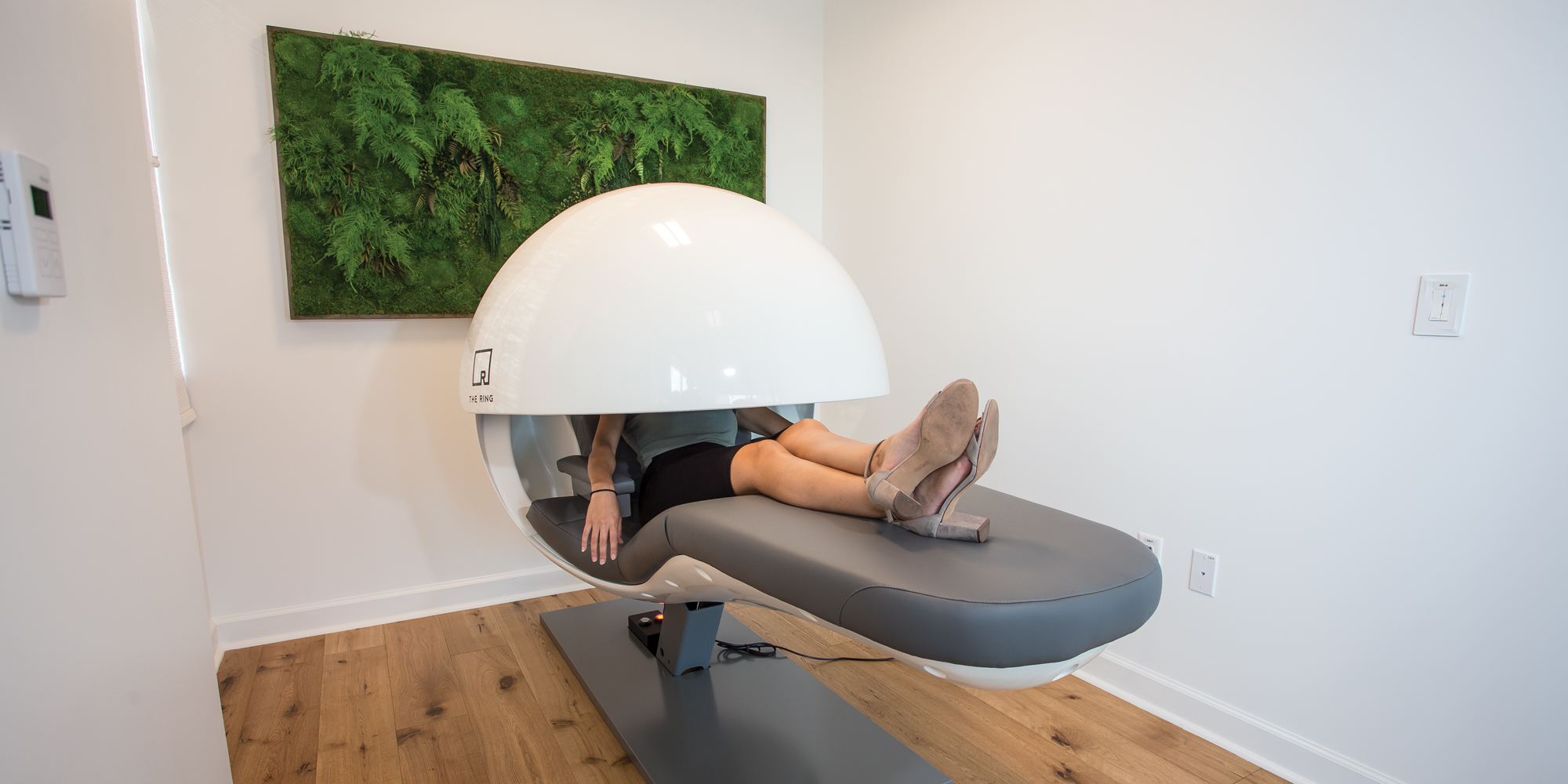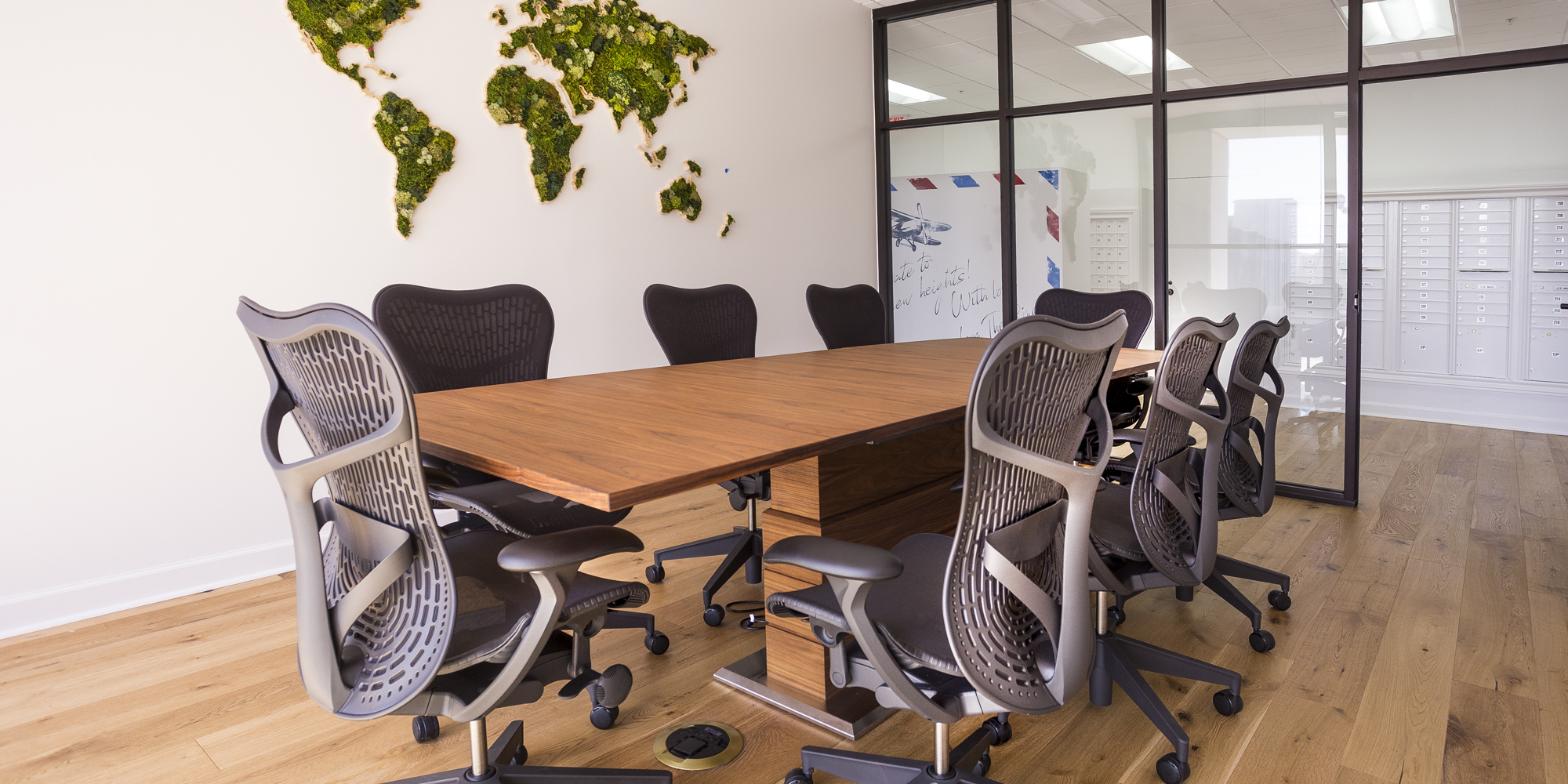For most people, their workspace is like a second home. But from uncomfortable chairs to relentless fluorescent lighting, it’s usually not a particularly healthy space, nor one conducive to productivity.
Entrepreneur Daniels Ikajevs set out to change that dynamic with The Ring, a new wellness-focused co-working space he and wife Simi Adhikari co-founded in Downtown Clearwater.
“We wanted to build the world’s healthiest workspace,” Ikajevs says. “Typically, when you go into any space, what your eyes see [is] what’s considered to be design. We kind of went a step ahead and wanted to create an environment that makes people feel better inside the space.”
People spend about 90% of their time in- doors and about 60% of their day in their work- space, says The Ring’s co-founder and chief operating officer, Janelle Branch. As such, The Ring team worked with local design firms Clear ph and Taide Scape to consider the ways people have sensory interactions with a built environment (think smells, touch) and let that drive the space’s design.
“What is [the design] evoking, in terms of your emotion?” Branch asks. “How does it make you feel in every given space?”
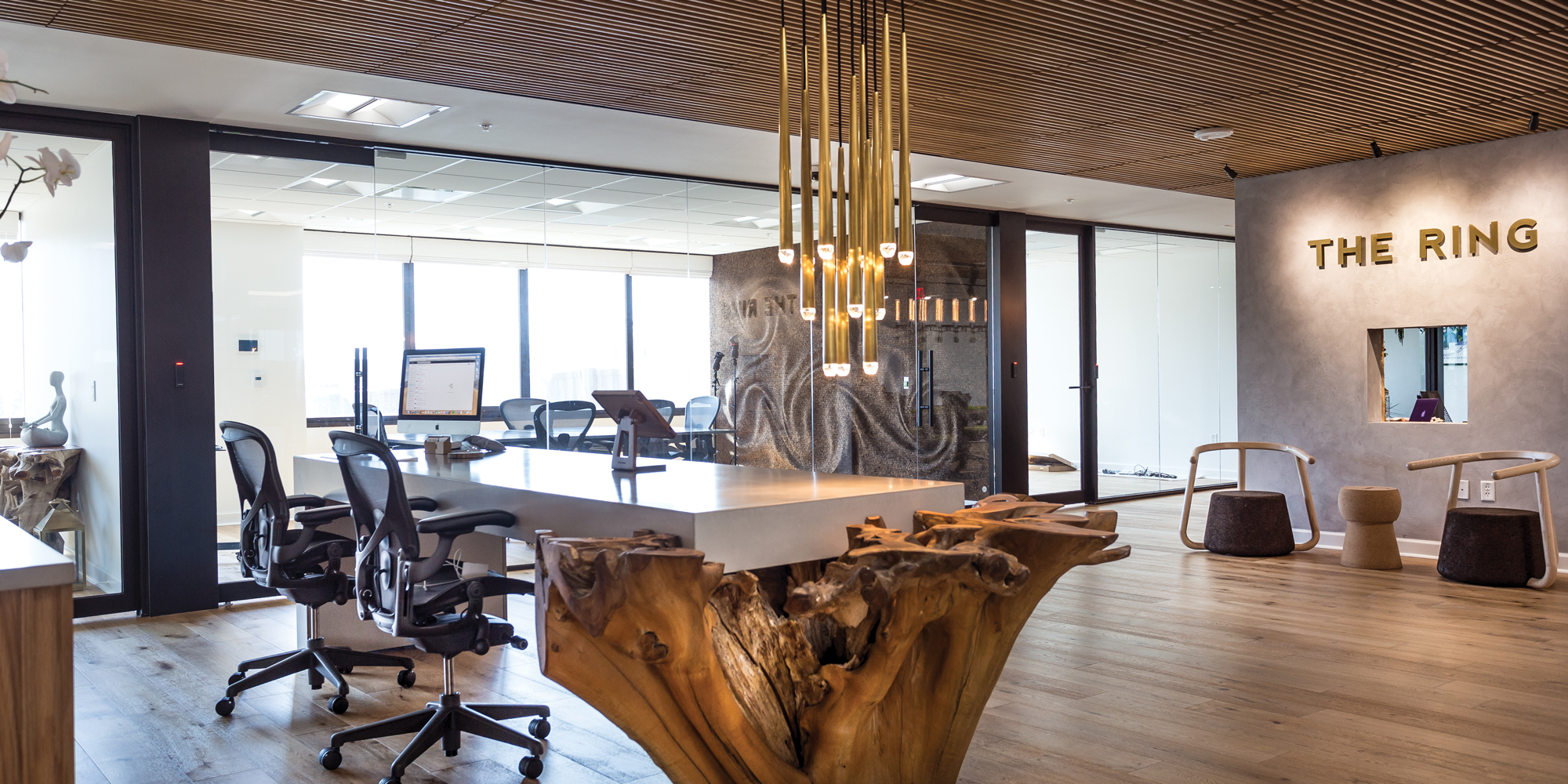
The Ring was built to adhere to the WELL Building Standard, which mandates specific levels of air quality, natural light, access to healthy food and water, and more to benefit the health of a building’s human occupants. The Ring is one of 60 buildings worldwide participating in the year-long Healthy Buildings study conducted by Harvard University’s T.C. Chan School of Public Health to determine the physical impacts of a space on the occupants’ well-being, along with measures like cognitive function, employee retention and sick days.
Biophilic design — a design principle that prioritizes reconnecting humans with nature — plays a big role in creating a healthy space. “We started in nature, so we wanted to bring that inside,” Branch says.
A large art piece by the Northern California company Artisan Moss hangs above the shared workspace, while The Ring ’s long, slab tables are all made with reclaimed wood from naturally fallen trees. Bringing in nature extends to the sun, with natural light reaching just about every corner of The Ring. The glass walls were constructed so that even the interior offices receive natural light. Inside, the colors and tones of each office’s lights can be changed (more white, less yellow, and so on), with each individual light adjusting independently as the day goes on based on the amount of available sunlight.
Air quality was one of The Ring’s most important, but trickiest, components. While there is no governmental standard for the air quality of a built environment, Ikajevs had to outfit the entire building (which he owns) with a new air filtration system to meet or exceed the WELL standard. Ikajevs can quickly pull up The Ring’s air quality, which typically measures around 600 parts per million of carbon dioxide (far below the WELL standard of 800 ppm), on Harvard’s proprietary For Health app. Air quality’s effect on cognitive function is one area the university’s study is investigating, he notes.
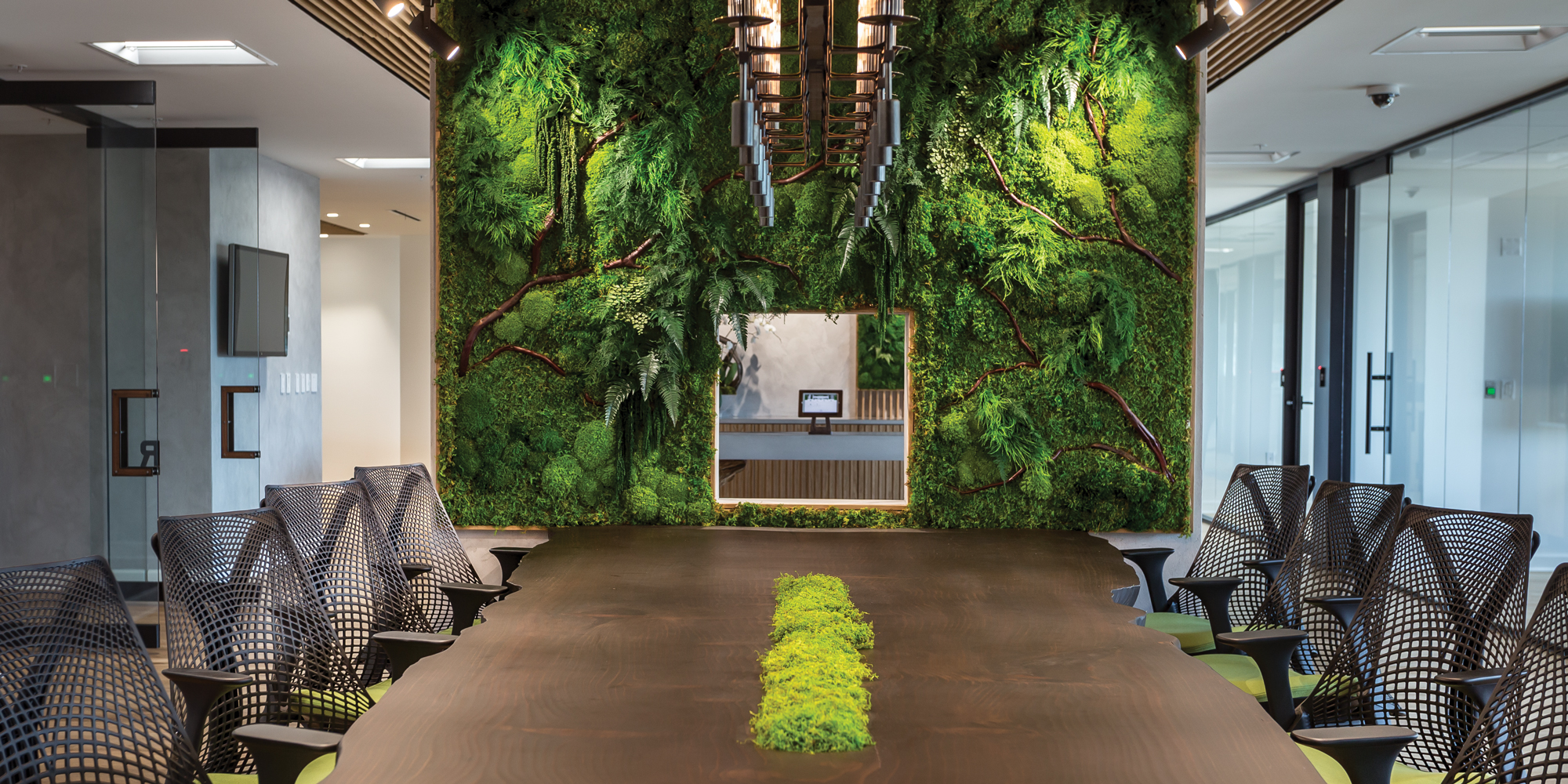
People and companies are buying in to what The Ring is selling, Ikajevs says. Beyond meeting the WELL standard (which Ikajevs hopes to make official with a WELL certification by the end of the year), the space does not use single-use plastic or animal products like leather and wool. The Ring team used vendors that placed a similar emphasis on sustainability — like furniture company Herman Miller — while they had to push other companies to see The Ring’s vision, often to innovative results. Ikajevs and his team convinced the window treatment company Hunter Douglas to replace all the plastic knobs found on its blinds with wooden knobs. It was a first for the company, born out of a desire to be involved with The Ring ’s mission to create a healthier workforce.
“We believe that human capital is, in today’s business world, your single highest [entry] on your balance sheet,” Ikajevs says. “So why not invest in the wellness of your biggest asset? And if [employees] feel better, if they feel happier inside the space, you will avoid costly training of new hires, have better employee retention, avoid sick days. These are some of the intrinsic values that we provide for our members.”


